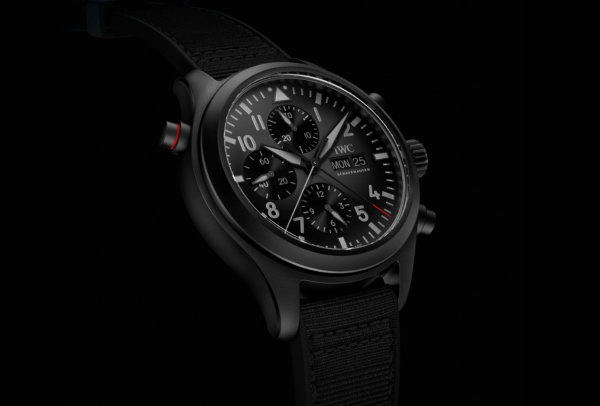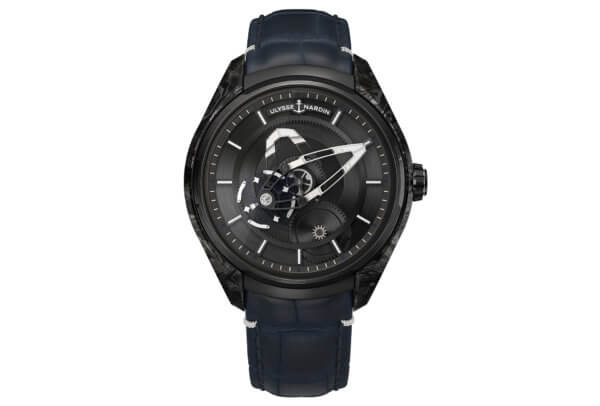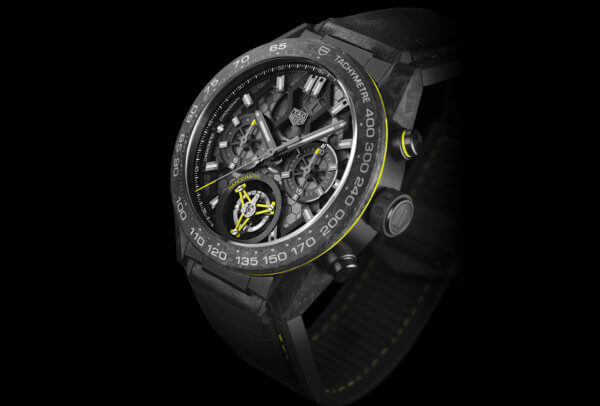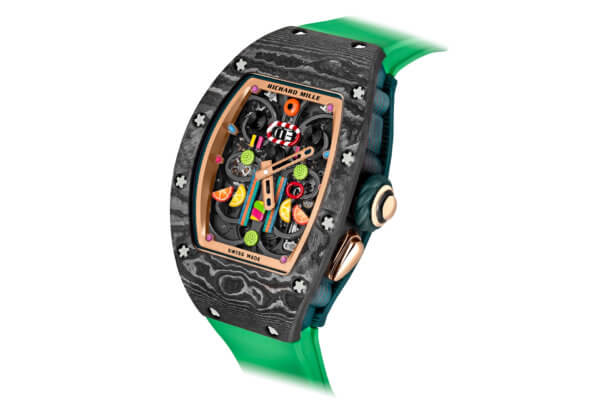Because the passage of time is, without a doubt, a watch’s worst enemy, eating away at its original beauty, the makers of these wonderful objects do all that they can to protect them from its ravages by developing increasingly innovative materials. Repeated shocks? Corrosion? Scratching? Watchmakers and engineers are taking the matter – literally – in hand.

At the 29th Salon International de la Haute Horlogerie, collections were awash with new materials, their high-tech credentials underscored by names ending in “ium” or “tech”. First off, IWC came with not one but two innovations, starting with the Big Pilot’s Watch Constant-Force Tourbillon Edition “Le Petit Prince” in hard gold. This red gold alloy has a modified microstructure to obtain a hardness of 320 Vickers; that’s almost twice that of ordinary gold. The biggest news, however, was Ceratanium. After a first appearance last year on a limited edition, this ceramic-titanium material now enters serial production with the Pilot’s Watch Double Chronograph Top Gun Ceratanium. As lightweight and robust as titanium, this patented, proprietary alloy is also as hard and as scratch-resistant as ceramic. “Both these materials are part of IWC’s history,” notes head of R&D, Lorenz Brunner. “We’ve been using titanium since the early 1980s and ceramic since 1986. The problem with ceramic is that it can break. Manufacturing ceramic components is also a complicated process. As for titanium, it has the advantage of its light weight, but the disadvantage of being prone to scratching.”
Largely inspired by applications in the medical field, Ceratanium offers the best of both worlds. Case, buckle, crown and pushers are first machined from a high-purity titanium alloy then surface-finished – sandblasted, polished or satin-finished – before being baked in a furnace. The surface layer transforms into ceramic while the inside is still titanium. The result, Ceratanium, has a hardness of 1,300 Vickers and is 33% lighter than steel.
Panerai in the running
No stranger to the ocean’s floor and other challenging environments, Panerai presents its own immersion into high-tech materials with the Submersible BMG-TECH 47mm dive watch. The case is made entirely from BMG-TECH, a bulk metallic glass obtained from a special alloy of zirconium, copper, aluminium, titanium and nickel which is injected into a mould at high pressure and high temperature then rapidly cooled – just a few seconds – so that the atoms aren’t able to reform a regular structure. It’s this “chaotic” structure that gives BMG-TECH its properties: 70% more scratch-resistant than titanium, lighter than steel, and excellent resistance to corrosion and shocks. As a compliment to this resilient alloy, the bezel of the Submersible BMG-TECH 47mm is in carbotech; a featherlight material, based on carbon fibre.
Panerai doesn’t stop there. The new Submersible Luna Rossa 47mm, as worn by the Italian crew and Challenger of Record in the next America’s Cup, sports a carbotech case while pieces of sailcloth from Luna Rossa’s AC75 monohull have been applied to the dial. Meanwhile, the Submersible Mike Horn Edition introduces a case, back, bezel and crown-guard made from Eco-Titanium recycled titanium, matched by recycled plastic for the strap. These adventures in sustainably-driven technology appear to be making inroads in the R&D departments of the brands exhibiting in Geneva last week.
From aerospace to the wrist
Ulysse Nardin is another brand promoting its environmental credentials through the new watches in the X collection, whose cases take advantage of Carbonium’s multiple benefits. Made from carbon fibres used in the aerospace industry, and twice as light as aluminium, the brand claims that Carbonium production has a significantly lower environmental impact than conventional carbon composites. The cherry on the cake is the marbling effect created by the carbon fibres, which Ulysse Nardin’s designers and engineers can combine with pigments or precious metals. Carbonium Gold, for example, blends 7 µm carbon fibres with particles of gold.

Another carbon-fibre combo makes its debut at Girard-Perregaux as a Carbon Glass prototype. Carbon and glass fibres are compressed to produce a material with particularly interesting properties of lightness and hardness: 100 times harder than steel, according to the brand.
A carbon balance spring at TAG Heuer
The standout material among the raft of new watches unveiled in Geneva last week, carbon is also making its home inside movements. TAG Heuer is the first to include a carbon composite balance spring in a watch. Produced using natural gas, it is unaffected by gravity, shocks, magnetic fields and variations in temperature. This carbon balance spring delivers optimal precision to the chronometer-grade Carrera Calibre Heuer 02T Tourbillon Nanograph.

Over at Richard Mille, Carbon TPT continues to take the lion’s share in the good-enough-to-eat Bonbon collection, which features cases that layer Carbon TPT and Quartz TPT in candy colours. Among these juicy shades is a completely new turquoise which the NTPT laboratory spent more than a year developing for Richard Mille.

Luminous in yellow sapphire at Hublot, soft as silk yet hard as stone as Titalyt coating at Élégante by F.P. Journe, as resistant as ceramic but light as aluminium at Singer Reimagined, materials science is widening the horizons of time measurement. Precision, eternity, inalterability… would we be right in thinking that for watchmakers, performance is now measured in grams and Vickers, too?





















